Discover breathtaking desert landscapes around the world that showcase surreal beauty, unique ecosystems, and astonishing geological wonders.
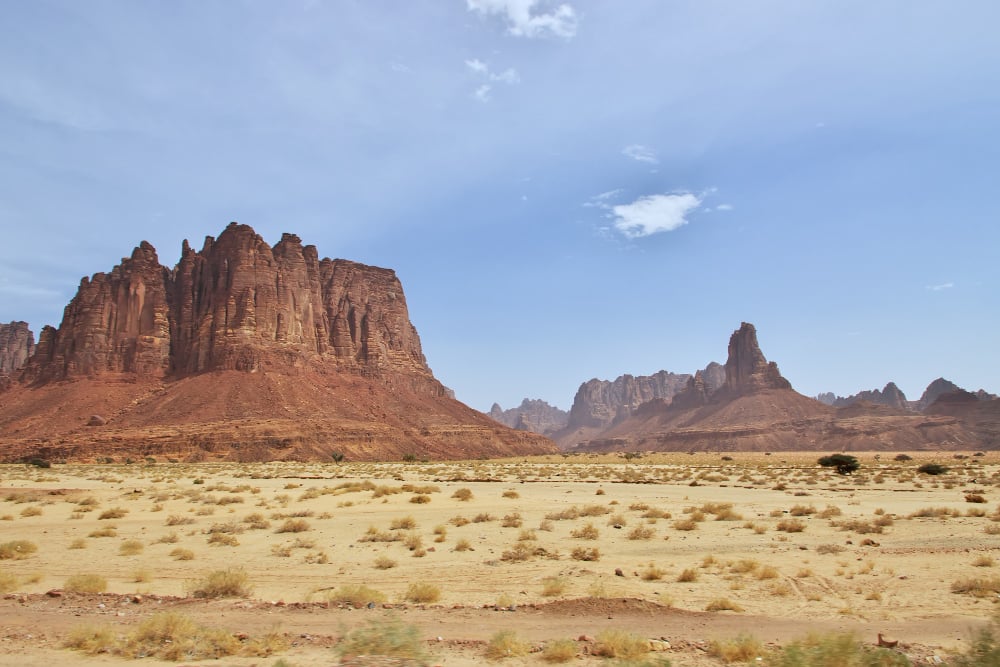
Think deserts are just endless sand dunes? Think again! Some of the world’s most extraordinary landscapes are hidden within remote desert regions, featuring colorful canyons, surreal rock formations, and even salt flats that seem otherworldly. These breathtaking deserts defy the typical barren stereotype, offering unique natural wonders that most travelers have never even heard of.
Here are 11 other worldly desert landscapes that showcase the unexpected beauty and diversity found in Earth’s driest regions.
1. Atacama Desert – Chile
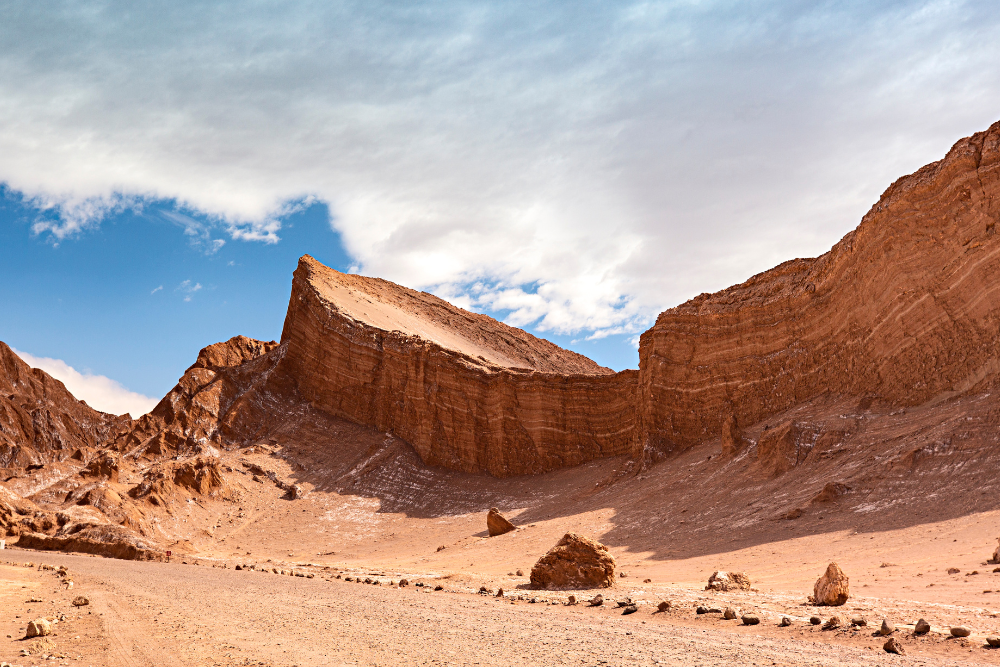
The Atacama Desert in Chile is one of the driest places on Earth, yet it boasts an astonishing array of landscapes. From salt flats and geysers to pink-hued mountains, Atacama is like stepping onto another planet. The desert’s high altitude and clear skies make it a prime destination for stargazing. Visitors can explore unique features like the Moon Valley, where wind-carved rock formations and vast sand dunes create a surreal, lunar-like landscape.
2. Namib Desert – Namibia
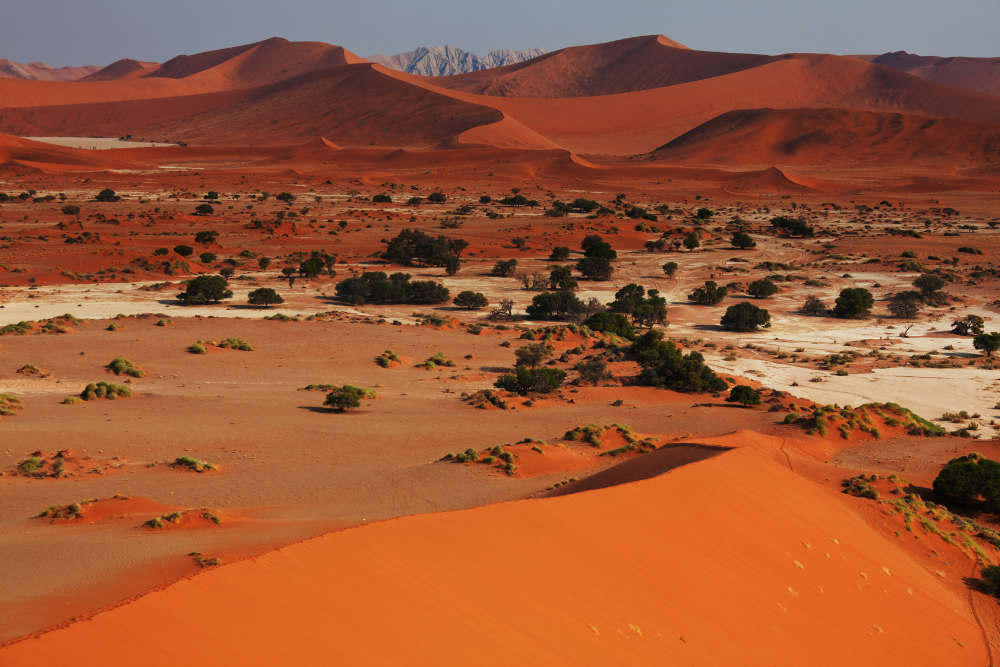
The Namib Desert, one of the oldest deserts in the world, is famous for its towering red sand dunes and the haunting beauty of Deadvlei. Here, ancient, dead trees stand starkly against white clay, surrounded by bright orange dunes. This desert is also home to unique wildlife adapted to survive in its harsh conditions, including oryx and desert elephants. The Namib’s striking colors and vast emptiness make it a photographer’s paradise and a must-see destination for desert lovers.
3. White Desert – Egypt
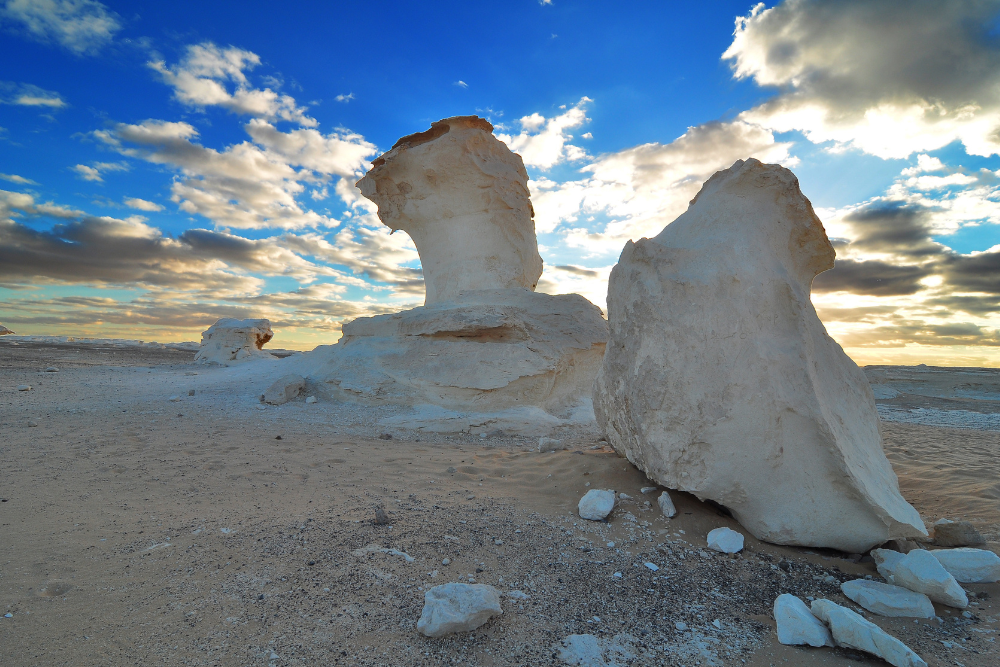
Egypt’s White Desert, located in the Farafra depression, is known for its surreal, chalky rock formations that resemble icebergs or sculptures from another world. Formed by centuries of erosion, these limestone shapes vary from towering mushrooms to intricate spires, creating an almost dreamlike landscape. The contrast of the white rocks against the golden sand is stunning, especially at sunrise and sunset. Visiting the White Desert offers a unique glimpse into Egypt’s natural wonders beyond the famous pyramids.
4. Wadi Rum – Jordan
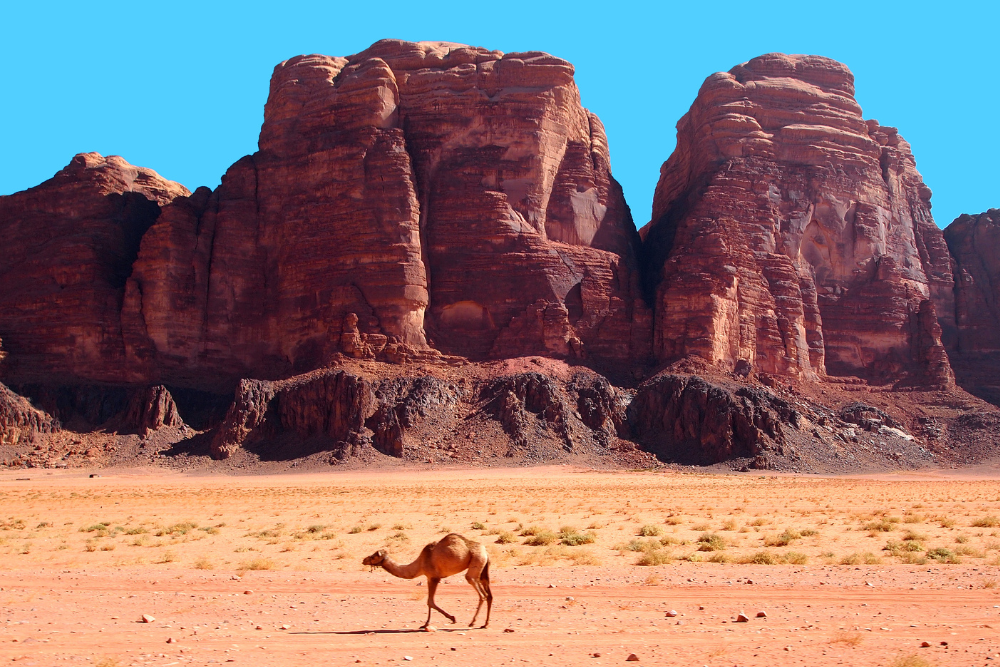
Wadi Rum, also known as the Valley of the Moon, is a sandstone and granite desert in Jordan famous for its red sand and towering rock formations. This vast desert is rich in history, with ancient petroglyphs and Bedouin tribes who still inhabit the region. Wadi Rum’s dramatic landscape has been featured in numerous films, including Lawrence of Arabia. Visitors can explore by jeep, camel, or on foot, discovering arches, cliffs, and hidden valleys that feel entirely timeless.
5. Pinnacles Desert – Australia
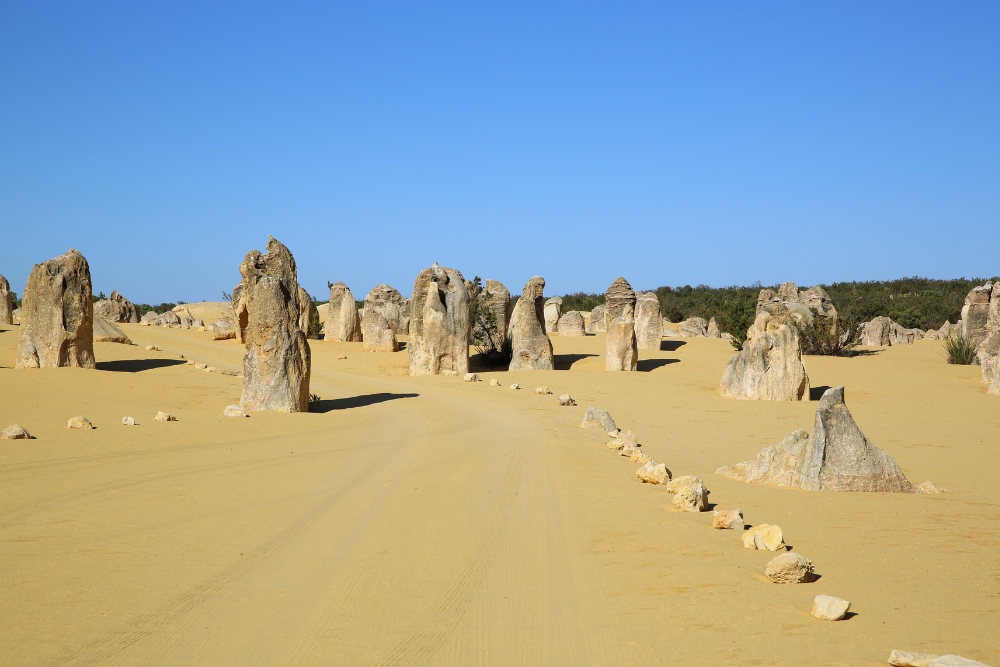
Located in Nambung National Park, the Pinnacles Desert in Australia is known for its thousands of limestone pillars that rise from the golden sand like ancient monoliths. Formed over thousands of years, these eerie formations vary in size, creating an unusual and fascinating landscape. Visitors can walk through the desert or take a drive along designated paths to see these natural sculptures up close. The Pinnacles Desert offers an unexpected contrast to Australia’s coastal scenery and is perfect for unique photographs.
6. Salar de Uyuni – Bolivia
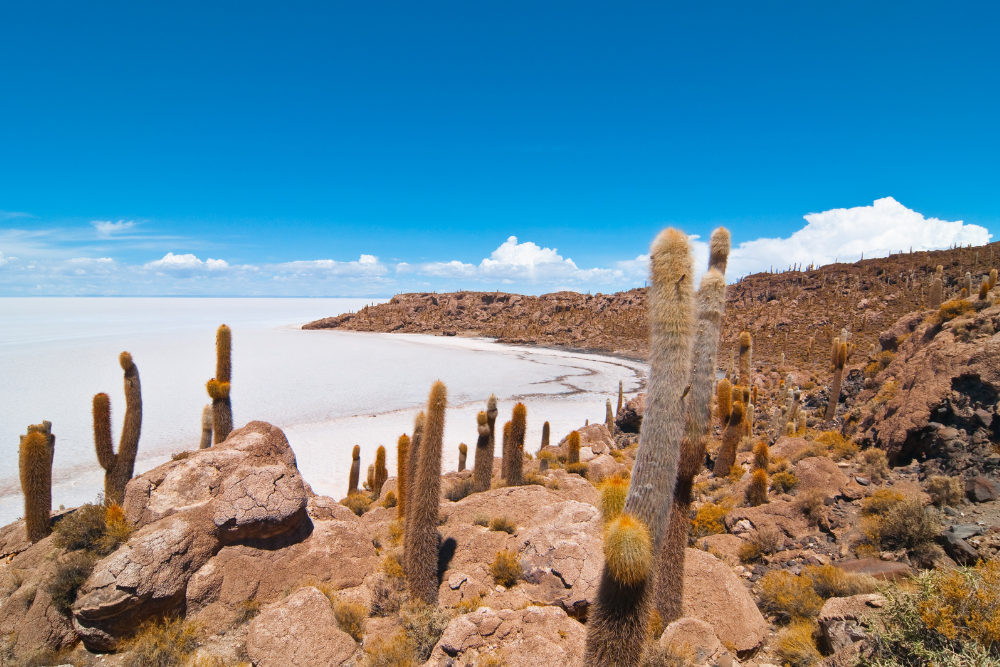
Salar de Uyuni in Bolivia is the world’s largest salt flat, covering over 4,000 square miles. During the rainy season, a thin layer of water transforms the salt flat into a massive, mirror-like surface, reflecting the sky and creating a surreal experience. Even in the dry season, the vast, blindingly white landscape is awe-inspiring. This unique desert environment is also home to rare pink flamingos and serves as a major source of lithium, adding both natural beauty and economic importance.
7. Sonoran Desert – USA & Mexico
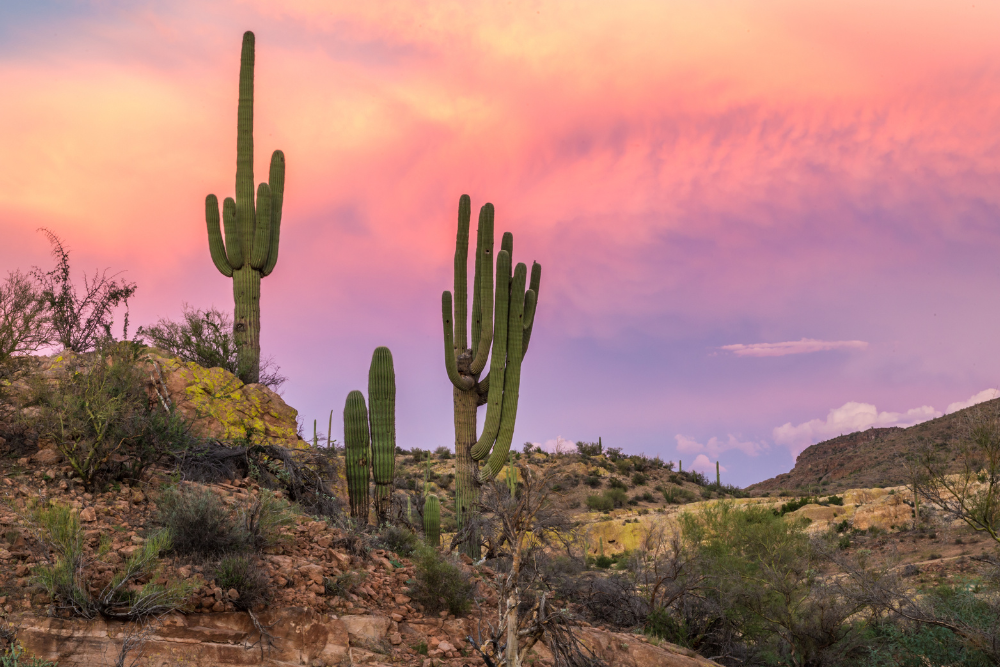
The Sonoran Desert, spanning across the southwestern United States and northern Mexico, is home to diverse ecosystems and the iconic saguaro cactus. Known for its lush landscapes compared to other deserts, the Sonoran Desert bursts with life, from desert wildflowers to unique wildlife like roadrunners and desert tortoises. With its vibrant sunsets and rugged mountain backdrops, the Sonoran offers visitors a beautiful mix of flora and fauna that redefine the typical desert experience.
8. Dasht-e Lut – Iran
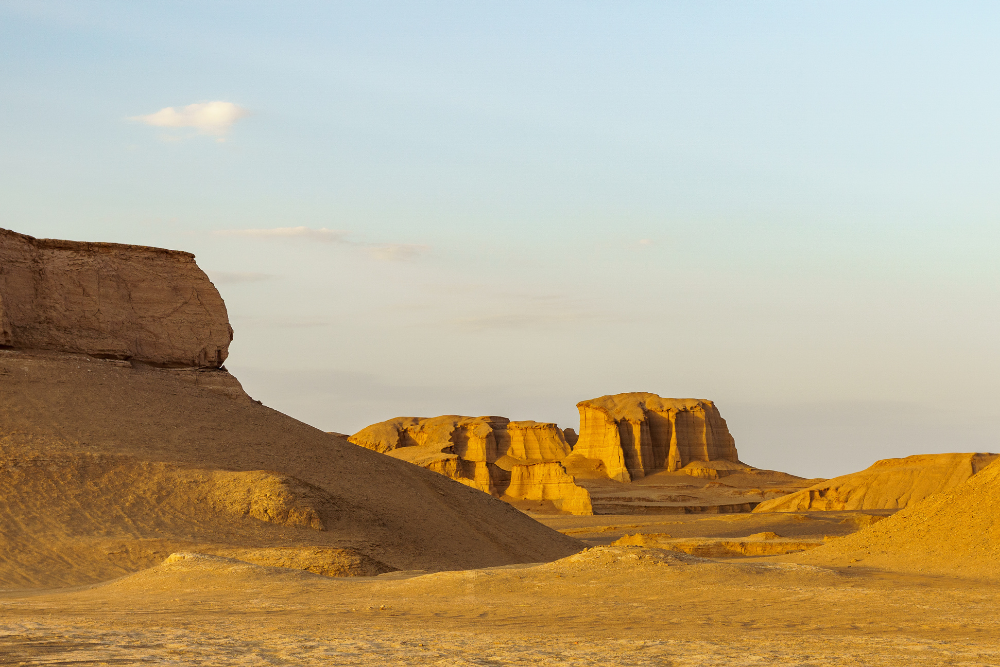
Dasht-e Lut, or the Lut Desert in Iran, is one of the hottest places on Earth, with temperatures recorded at over 150°F. Despite its extreme conditions, the desert features impressive sand dunes, salt plains, and bizarre rock formations known as yardangs. These wind-sculpted structures create a striking, otherworldly landscape. Known for its intense climate and geological features, Dasht-e Lut is a destination for adventurous travelers seeking a raw and unspoiled desert experience.
9. Painted Desert – USA
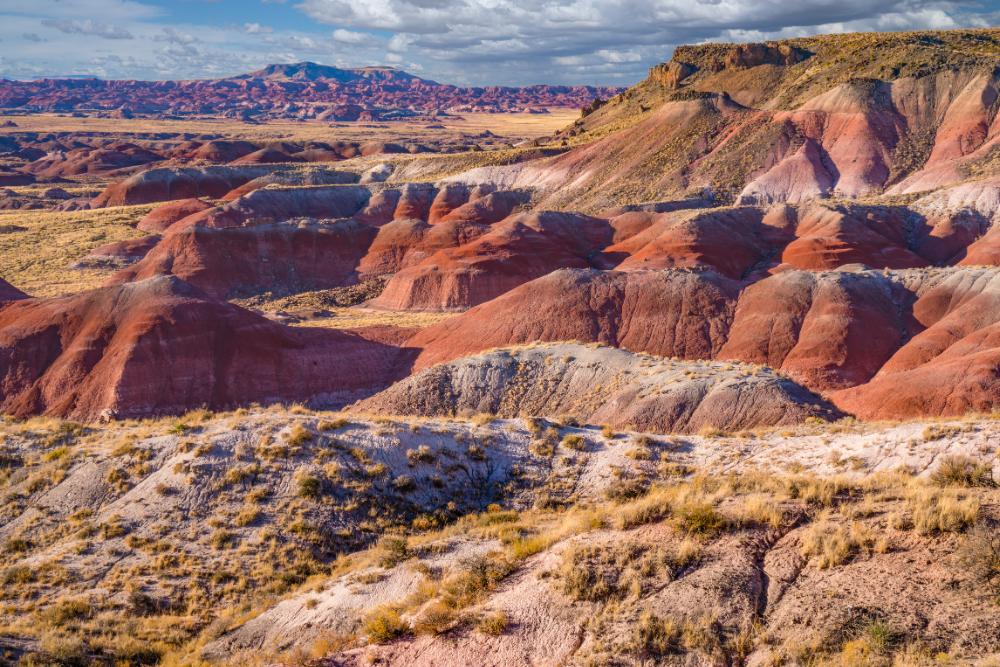
Located in Arizona, the Painted Desert lives up to its name with layers of red, pink, orange, and purple sandstone that stretch across the landscape. This colorful desert is especially striking at sunset, when the hues become even more vibrant. The Painted Desert is home to Petrified Forest National Park, where visitors can explore ancient, fossilized trees. With its unique colors and geological history, the Painted Desert offers a visually stunning and educational experience.
10. Gobi Desert – Mongolia & China
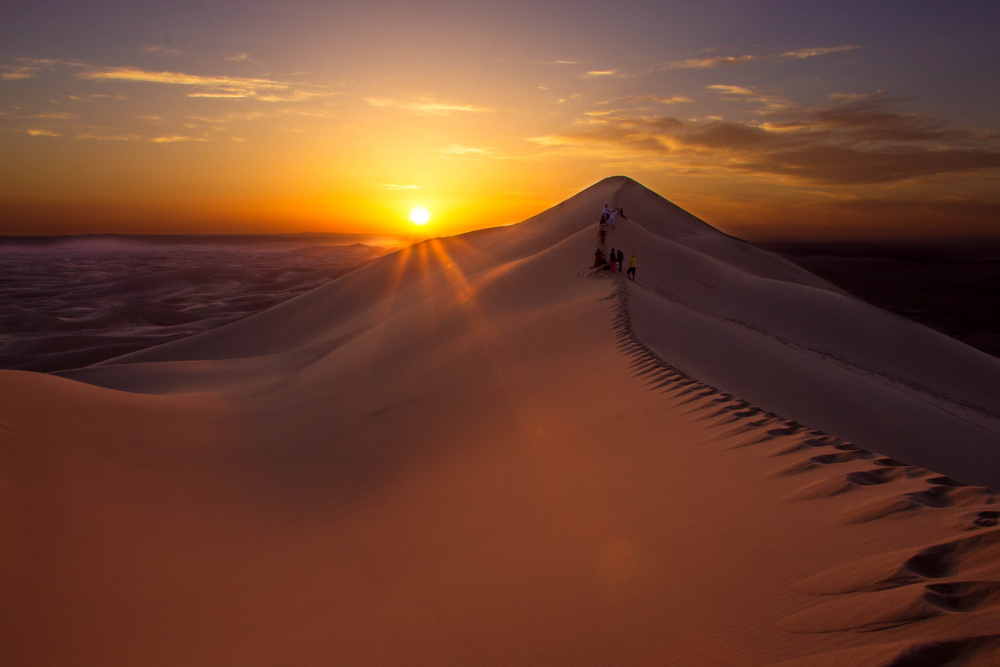
The Gobi Desert, spanning Mongolia and northern China, is known for its diverse terrain, including sand dunes, mountains, and grassy steppes. Famous for its role in the Silk Road and as the home of dinosaur fossils, the Gobi combines history, culture, and natural beauty. Visitors can explore dunes like Khongoryn Els and encounter nomadic herders who have lived in the region for centuries. The Gobi’s vastness and cultural richness make it one of Asia’s most fascinating deserts.
11. Kalahari Desert – Southern Africa
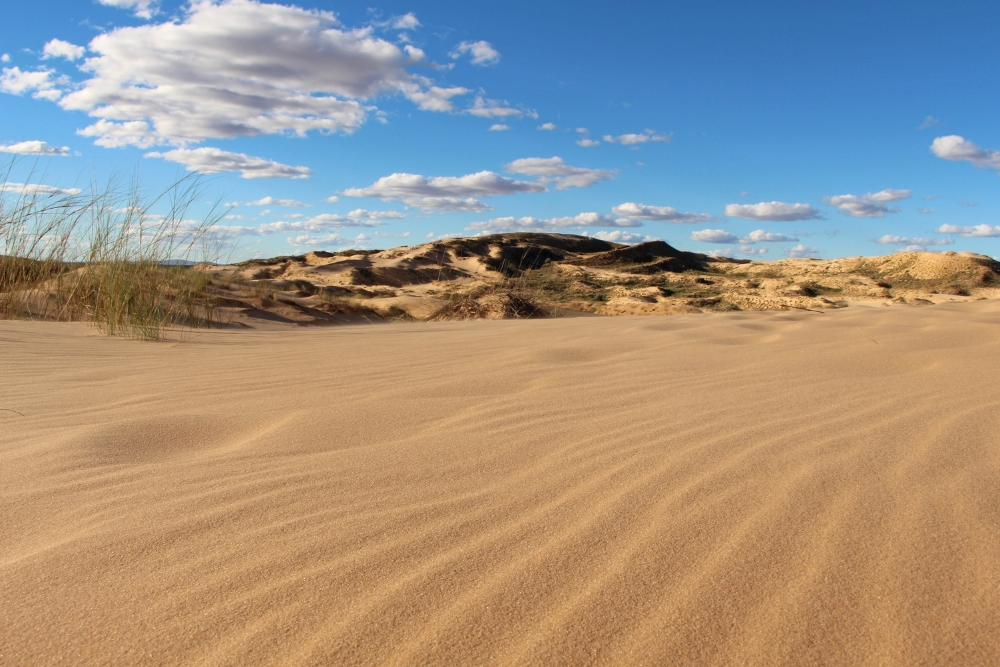
The Kalahari Desert, stretching across Botswana, Namibia, and South Africa, is a semi-arid desert known for its red sand and incredible wildlife. Unlike typical deserts, the Kalahari supports a diverse ecosystem, including lions, cheetahs, and meerkats. During the rainy season, the desert blooms, transforming into a vibrant landscape. The Kalahari is also home to the indigenous San people, who have adapted to the desert’s conditions for thousands of years, offering travelers a unique cultural and natural experience.
